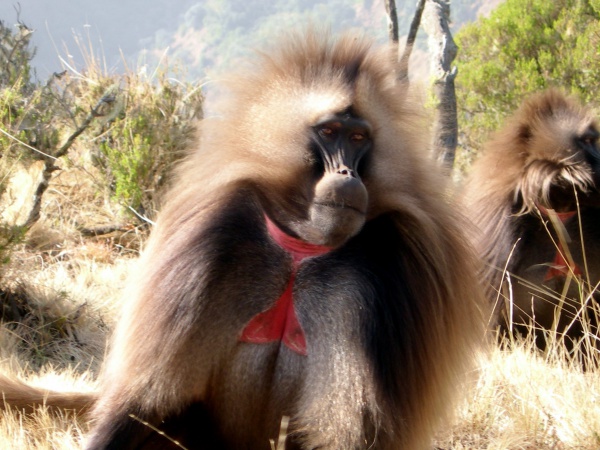Facts About Gelada
The gelada, often referred to as the bleeding-heart monkey, is a captivating Old World monkey endemic to the Ethiopian Highlands, particularly in the Semien Mountains. Although they are occasionally mistaken for baboons, geladas are the sole surviving members of the genus Theropithecus. These monkeys are known for their terrestrial habits and foraging in grasslands. While they have been classified in their own genus since 1979, some genetic studies suggest they might share a close evolutionary relationship with baboons. Theropithecus gelada is the only extant species, although fossils reveal larger relatives that once existed.
Geladas are notable for their striking appearance. They exhibit a coat that varies from buff to dark brown, a dark face, and a distinctive hourglass-shaped patch on their chest. Males are significantly larger than females. These monkeys have adapted to a diet consisting mainly of grasses, seeds, and other vegetation, employing a specialized shuffling gait to feed as they traverse the grasslands of the Ethiopian plateau.
Socially, geladas live in complex structures reminiscent of those in hamadryas baboons. Their social organization includes reproductive units, all-male units, bands, and herds. Females form hierarchical groups, while males vie for dominance. Geladas communicate through a rich array of vocalizations and gestures, and they have displayed sophisticated behaviors such as deception and punishment within their groups.
Despite facing threats like habitat loss due to agriculture and hunting, geladas are currently listed as Least Concern by the IUCN. Conservation efforts are ongoing, with the establishment of protected areas like the Blue Nile Gorges National Park and the Indeltu Gorges Reserve to safeguard their populations.

 Kenya
Kenya